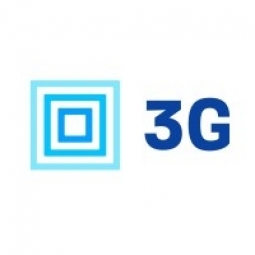公司规模
Large Corporate
地区
- America
国家
- United States
产品
- 3Gtms transportation management system (TMS)
技术栈
- Optimization algorithms
实施规模
- Enterprise-wide Deployment
影响指标
- Cost Savings
- Productivity Improvements
技术
- 功能应用 - 运输管理系统 (TMS)
适用行业
- 消费品
- 医疗保健和医院
适用功能
- 物流运输
用例
- 车队管理
- 供应链可见性(SCV)
服务
- 系统集成
关于客户
Bemis Manufacturing Company produces toilet seat products, along with indoor furniture, suction canisters, sharps containers, fluid management systems, gas caps, gauges, and various contracted injection molded parts. It markets products under its own brands and provides expertise to other organizations, producing private-label products and component parts for a variety of industries. It serves the consumer, commercial, medical and industrial markets worldwide. Bemis Manufacturing Company’s Sheboygan Falls location is the major North American distribution hub for all of its proprietary products.
挑战
Bemis Manufacturing Company’s Sheboygan Falls location is the major North American distribution hub for all of its proprietary products. But getting its products to various regional markets required enormous amounts of time and manual labor for determining the best routing options. The company’s original scheduling system, built to handle the transportation realities of 15-20 years ago, had provided Bemis with a competitive advantage in years past, but was now falling behind current business needs. Bemis’ network required five individuals to perform routing analysis and planning, taking into account multiple locations, carriers, along with factors like LTL versus truck load stop-off and many other data points. This led to huge variations and calculations for any one plan or date.
解决方案
Bemis Manufacturing chose the feature-rich, flexible 3Gtms transportation management system (TMS). “3Gtms knew our operations and we liked the fact that the TMS was oriented toward pool consolidations,” explained Bassuener. “It’s the core, principled system that moves us every day.” A Tier 1 TMS, 3Gtms increases productivity by improving shipment efficiency and communications; reducing freight cost; increasing shipment visibility; and providing greater financial transparency. Using sophisticated optimization algorithms, actual rate cost, along with a comprehensive set of data points such as fuel components, stop-off charges, bridge charges and more, the TMS determines and delivers the best plan that can be realistically executed. In addition, its intuitive user interface allows Bemis to graphically view the different loads, making it easy to make modifications or handle exceptions.
运营影响

Case Study missing?
Start adding your own!
Register with your work email and create a new case study profile for your business.
相关案例.
.png)
Case Study
Improving Vending Machine Profitability with the Internet of Things (IoT)
The vending industry is undergoing a sea change, taking advantage of new technologies to go beyond just delivering snacks to creating a new retail location. Intelligent vending machines can be found in many public locations as well as company facilities, selling different types of goods and services, including even computer accessories, gold bars, tickets, and office supplies. With increasing sophistication, they may also provide time- and location-based data pertaining to sales, inventory, and customer preferences. But at the end of the day, vending machine operators know greater profitability is driven by higher sales and lower operating costs.

Case Study
Hospital Inventory Management
The hospital supply chain team is responsible for ensuring that the right medical supplies are readily available to clinicians when and where needed, and to do so in the most efficient manner possible. However, many of the systems and processes in use at the cancer center for supply chain management were not best suited to support these goals. Barcoding technology, a commonly used method for inventory management of medical supplies, is labor intensive, time consuming, does not provide real-time visibility into inventory levels and can be prone to error. Consequently, the lack of accurate and real-time visibility into inventory levels across multiple supply rooms in multiple hospital facilities creates additional inefficiency in the system causing over-ordering, hoarding, and wasted supplies. Other sources of waste and cost were also identified as candidates for improvement. Existing systems and processes did not provide adequate security for high-cost inventory within the hospital, which was another driver of cost. A lack of visibility into expiration dates for supplies resulted in supplies being wasted due to past expiry dates. Storage of supplies was also a key consideration given the location of the cancer center’s facilities in a dense urban setting, where space is always at a premium. In order to address the challenges outlined above, the hospital sought a solution that would provide real-time inventory information with high levels of accuracy, reduce the level of manual effort required and enable data driven decision making to ensure that the right supplies were readily available to clinicians in the right location at the right time.

Case Study
Gas Pipeline Monitoring System for Hospitals
This system integrator focuses on providing centralized gas pipeline monitoring systems for hospitals. The service they provide makes it possible for hospitals to reduce both maintenance and labor costs. Since hospitals may not have an existing network suitable for this type of system, GPRS communication provides an easy and ready-to-use solution for remote, distributed monitoring systems System Requirements - GPRS communication - Seamless connection with SCADA software - Simple, front-end control capability - Expandable I/O channels - Combine AI, DI, and DO channels

Case Study
Driving Digital Transformations for Vitro Diagnostic Medical Devices
Diagnostic devices play a vital role in helping to improve healthcare delivery. In fact, an estimated 60 percent of the world’s medical decisions are made with support from in vitrodiagnostics (IVD) solutions, such as those provided by Roche Diagnostics, an industry leader. As the demand for medical diagnostic services grows rapidly in hospitals and clinics across China, so does the market for IVD solutions. In addition, the typically high cost of these diagnostic devices means that comprehensive post-sales services are needed. Wanteed to improve three portions of thr IVD:1. Remotely monitor and manage IVD devices as fixed assets.2. Optimizing device availability with predictive maintenance.3. Recommending the best IVD solution for a customer’s needs.









